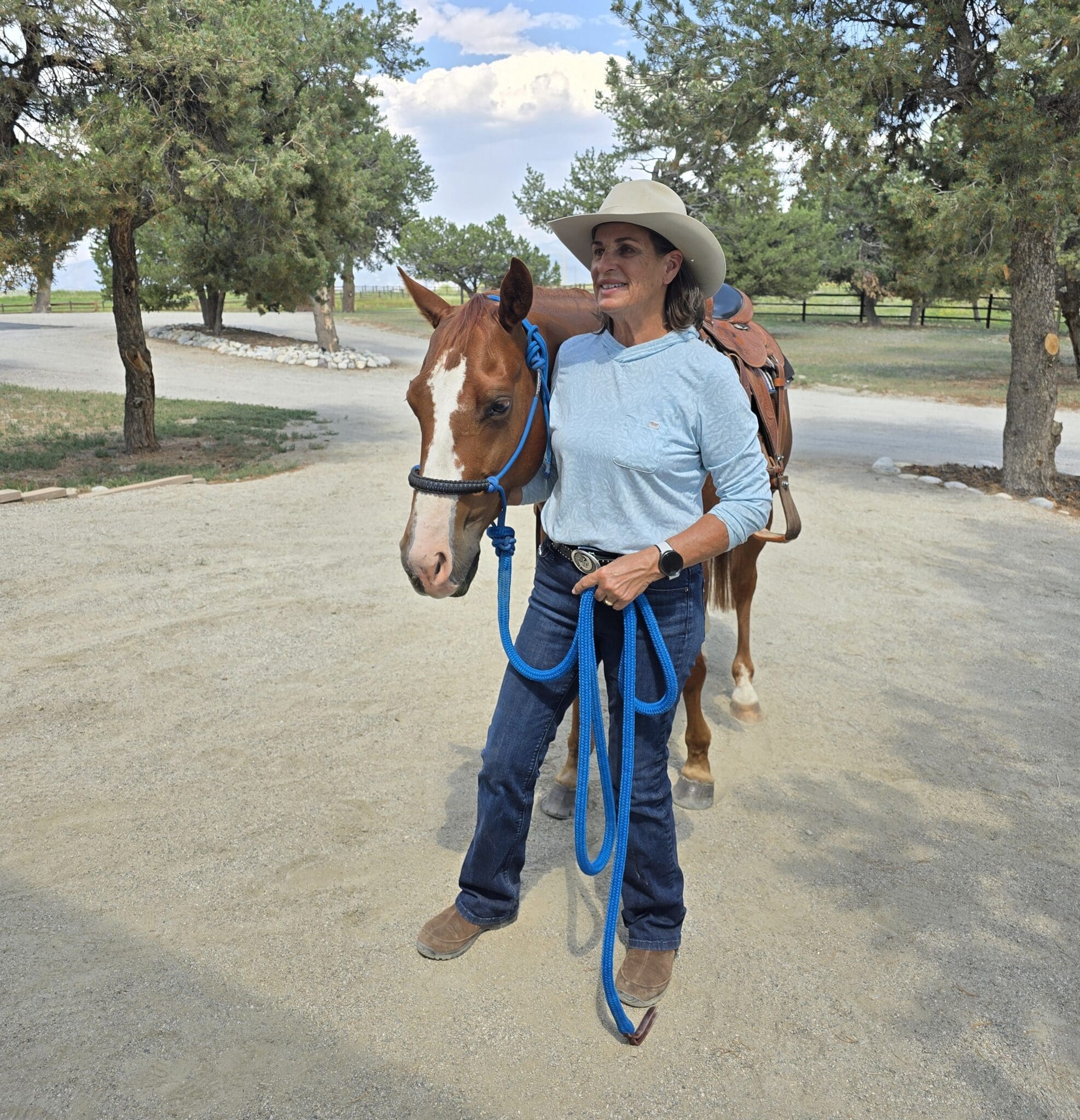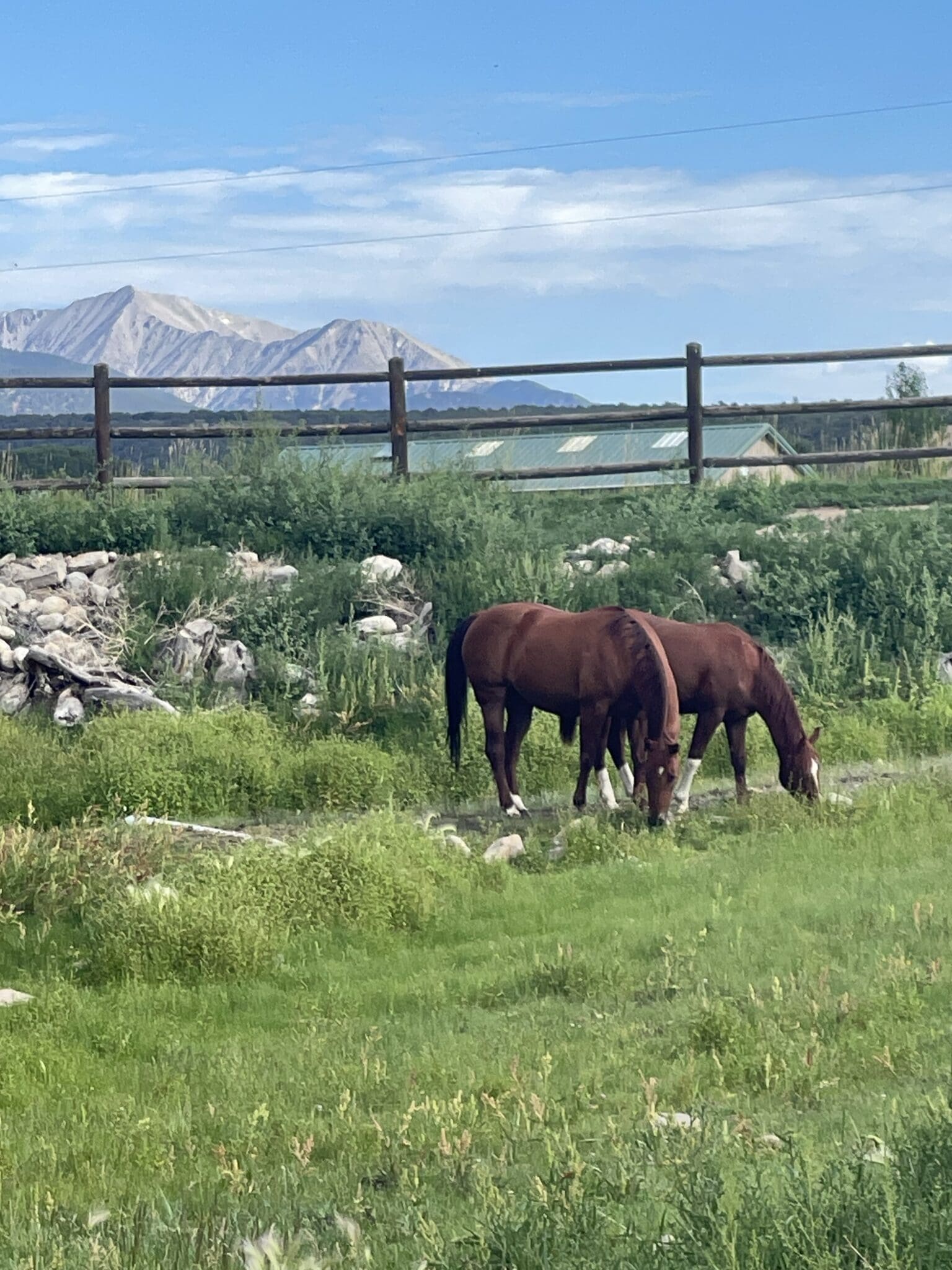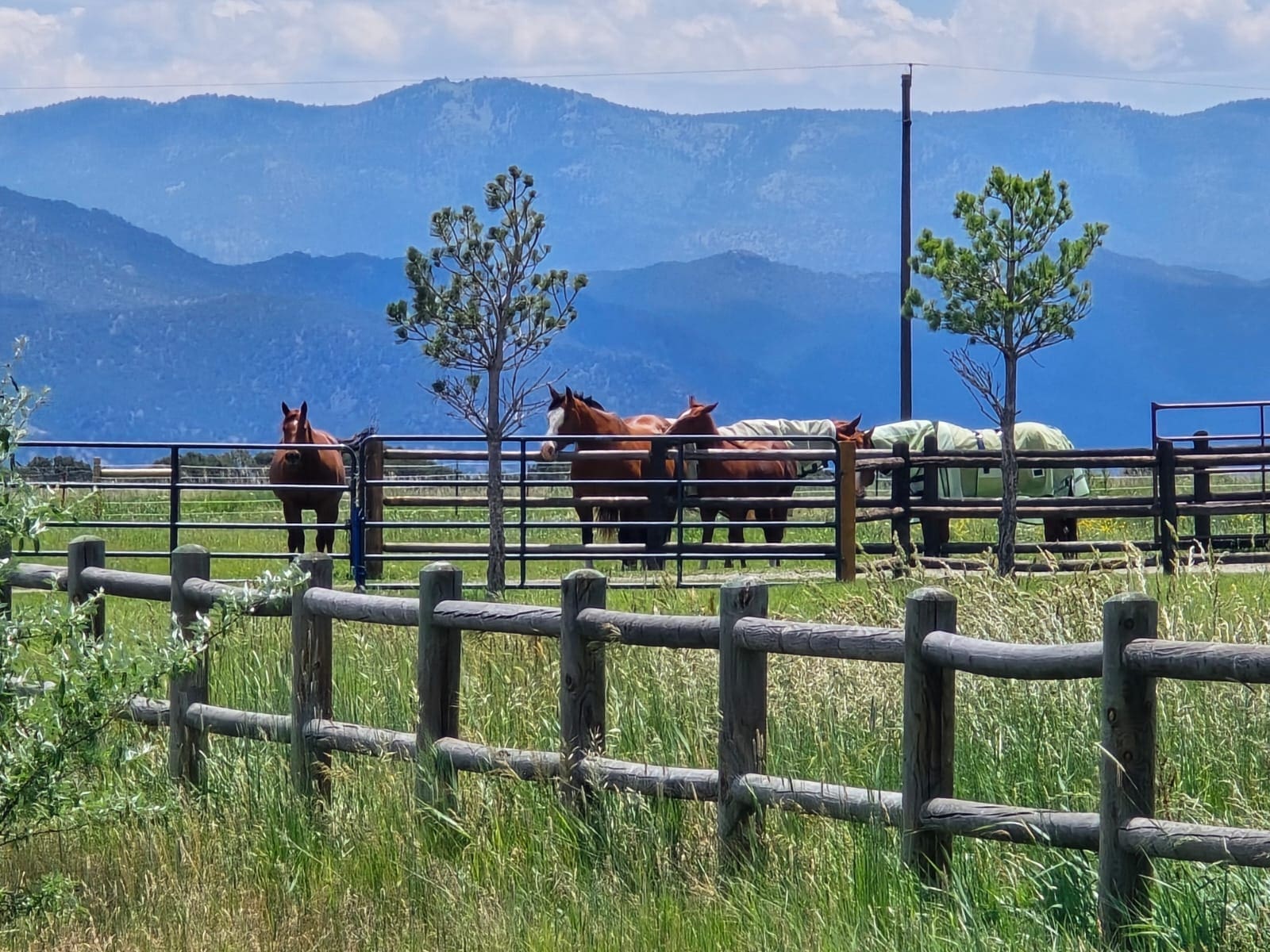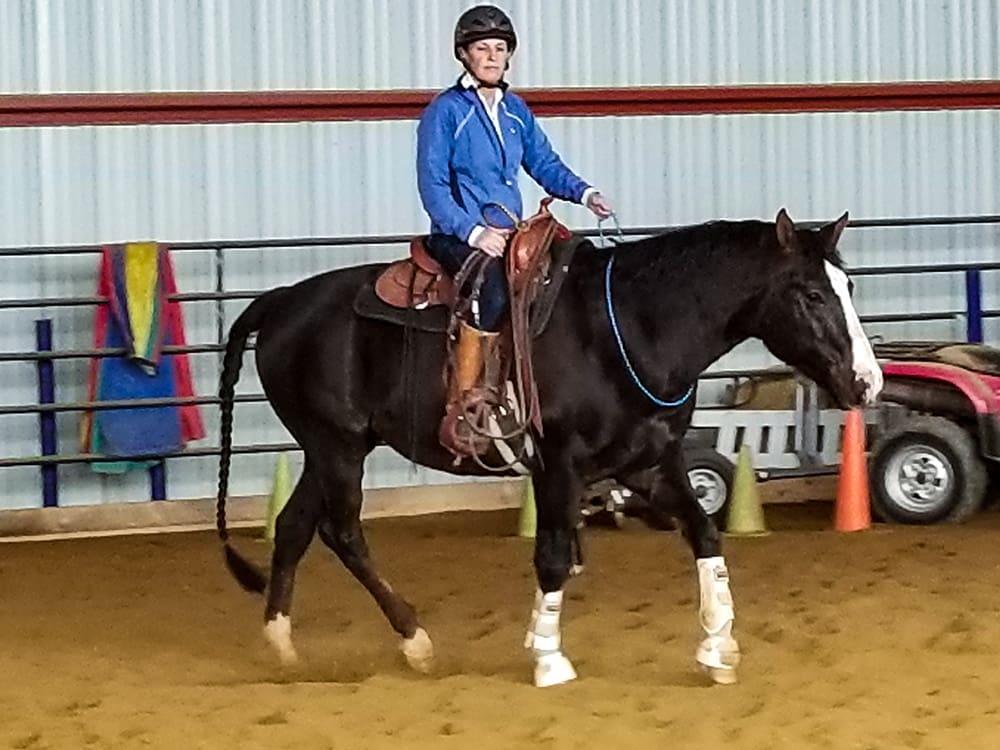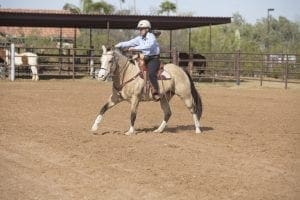 Everywhere I go—whether it’s to clinics, expos, conferences or just riding with friends—there are riders working on mastering the canter. Whether it is a novice rider just figuring out how to cue the horse and keep it going, a rider trying to slow down the gait and smooth out a wild ride or an advanced rider working on collection at the canter and difficult maneuvers like flying lead changes, we all have skills to master at this complicated and exhilarating gait.
Everywhere I go—whether it’s to clinics, expos, conferences or just riding with friends—there are riders working on mastering the canter. Whether it is a novice rider just figuring out how to cue the horse and keep it going, a rider trying to slow down the gait and smooth out a wild ride or an advanced rider working on collection at the canter and difficult maneuvers like flying lead changes, we all have skills to master at this complicated and exhilarating gait.
I’ve been training horses and riders for several decades now, so I know that people have the same problems with their horses and horses have the same problems with their riders. That’s one reason I started my free online Training Library years ago and compiling all the questions I get and the answers I gave. Most of the questions I’ve already answered or written about so I am always on the lookout for unusual questions. Still, no matter how unusual the question is, the answers usually fall into a few common themes when it comes to cantering—the riders must have leadership, authority, know how to give the horse a release of the cue and they must know how to use seat aids.
I’ve been working on more ways to help with the canter—and the many questions that come my way about the fast gait. Today, I am very excited to see the big Yellow Freight truck arrive with two pallets of my new video, Canter Master. In this new video we were able to address some of the most common issues at the canter from cueing to lead changes, with real-life riders, horses and issues. Working with five different horses and riders—all at different ability levels—I was able to address a multitude of common issues at the canter in a visual format that allows the viewer to see the problem and understand the solution.
Cantering challenge #1: Over-cueing the horse.
Our first rider is on a nicely trained horse, a very sweet mare, but she was blasting into the canter at warp speed because the rider was over-cueing, stiffening up and interfering with the horse’s mouth. When I rode the horse, she transitioned very smoothly and cantered slowly. Once I showed the rider how to prepare for the transition and cue the horse systematically and smoothly, she was able to loosen her death-grip on the horn and sit back and actually enjoy the ride! Horses can come to fear the canter because without knowing the precise cues and being relaxed, it’s easy for a rider to give the go and whoa command at the same time. If you’re tense and bracing when you ask for the canter, you can inadvertently hit your horse in the mouth with the bit when your arms are locked up and holding on too tight. Lesson one—relax and keep a balanced riding position before and during the canter. It’s tougher than it sounds.
Cantering challenge #2: Tension and bucking at the canter.
Our next subject was a really intriguing horse ridden by an up-and-coming young rider. It was a half-Arabian sport horse, and they were showing in Arab shows and huntseat equitation. It was a gorgeous horse, very athletic and very forward and each time the boy cued for canter the horse would launch into a bucking fit and run like a freight train. Bucking and/or running through the bridle at the canter are common problems and there can be many causes—sometimes rider induced, often stemming from physical problems in the horse. But in this case, it was an extremely common rider-horse co-dependence—a chicken and egg thing between the horse and rider (was the horse causing the rider to do that or was the rider causing the horse to do that?). Regardless of the cause, the cycle needed breaking and only that rider can do that. The solution was in first teaching the horse to lower its head and get rid of the stiff and bracing neck he had developed from years of being pulled on because he was going too fast. Then to get the rider to use his seat and not his legs to cue the horse and to give the horse the release he needs. You’ll see a big transformation in a short time. The young man did a great job once he learned to only cue as much as his horse required. The horse was sensitive and didn’t need a lot of convincing.
Cantering challenge #3: Feeling your leads.
If you look down to check your lead in the show ring, the judge is going to see it and deduct from your horsemanship score. You can, however, learn to FEEL your canter leads so you won’t have to look down again. Feeling canters leads is not hard, but you have to know what you are feeling and have the self-discipline not to look; think about how it feels for a few strides, make your decision then look if you need to verify your results. When the horse canters on the right lead, both his right hind and right fore are leading over the left legs (visa versa with the left lead) and he picks them up higher and reaches farther forward with those legs. Therefore, his back will be slightly crooked underneath your seat, both front-to-back and side-to-side. In your hips you’ll feel your inside hip in front of your outside, so if he is on the right lead, your right hip and leg will be in front of your left hip and leg. Because he is picking both leading legs up higher, you’ll also feel your weight shift to the outside, so if he is on the right lead, you’ll feel more weight in your left seat bone and left stirrup. This unevenness that you feel in his back is important in setting your horse up for the correct lead, cueing for the canter and cueing for flying lead changes. As you go about cueing your horse for canter, you basically set your body into the canter position for the lead—your outside leg down and back (which tends to bring your inside hip and leg forward), your inside rein lifted (which shifts your weight into the outside stirrup), then a push with your seat in the canter motion (like you are pushing a swing) tells the horse to canter. Starting in the position will help you know how your horse starts the gait and help you feel the difference.
Cantering challenge #4: Collection for the advanced horse and rider.
For the next story on this video you meet a long-time cowgirl and her gorgeous show horse who are working on collection at the canter. I loved working with this rider who had recovered from several back surgeries and was still actively competing. Teaching her to use her seat, legs and hands together in a soft rhythm in timing with the stride of the horse, she was able to slow down and round up her horse and smooth out the gait. So often, riders want to learn collection at the canter—as a top goal. That’s a great goal to have, but there’s often work to be done first—and lots of work collecting the trot will help the rider collect the canter more easily.
Cantering challenge #5: The flying lead change.
Rounding out the video, is perhaps one of the most common questions I get about the canter—how do I get my horse to do a flying lead change? Well, if it were that easy, anyone could do it, right? First you must have all the prerequisite skills like perfect canter departures, leg yielding, collection, etc.; the rider in this case was ready, on a horse that she had raised and trained herself. But every time she asked for the lead change, her horse would change to a cross-canter, if he responded at all—very common issues. The horse actually changed really well for me, it turned out he just needed more of a pre-signal from the rider (the most common fix for lead change problems). By breaking the preparation and cue down for the rider, she was able to make the leap and do some great changes.
Have you had any of these cantering challenges? Good luck as you master the canter and be sure to read more in the free Training Library on JulieGoodnight.com/Academy—and you’ll also find the Canter Master streaming training video on at Shop.JulieGoodnight.com. With knowledge, you’ll have the confidence you need to canter with confidence.
—Julie Goodnight
